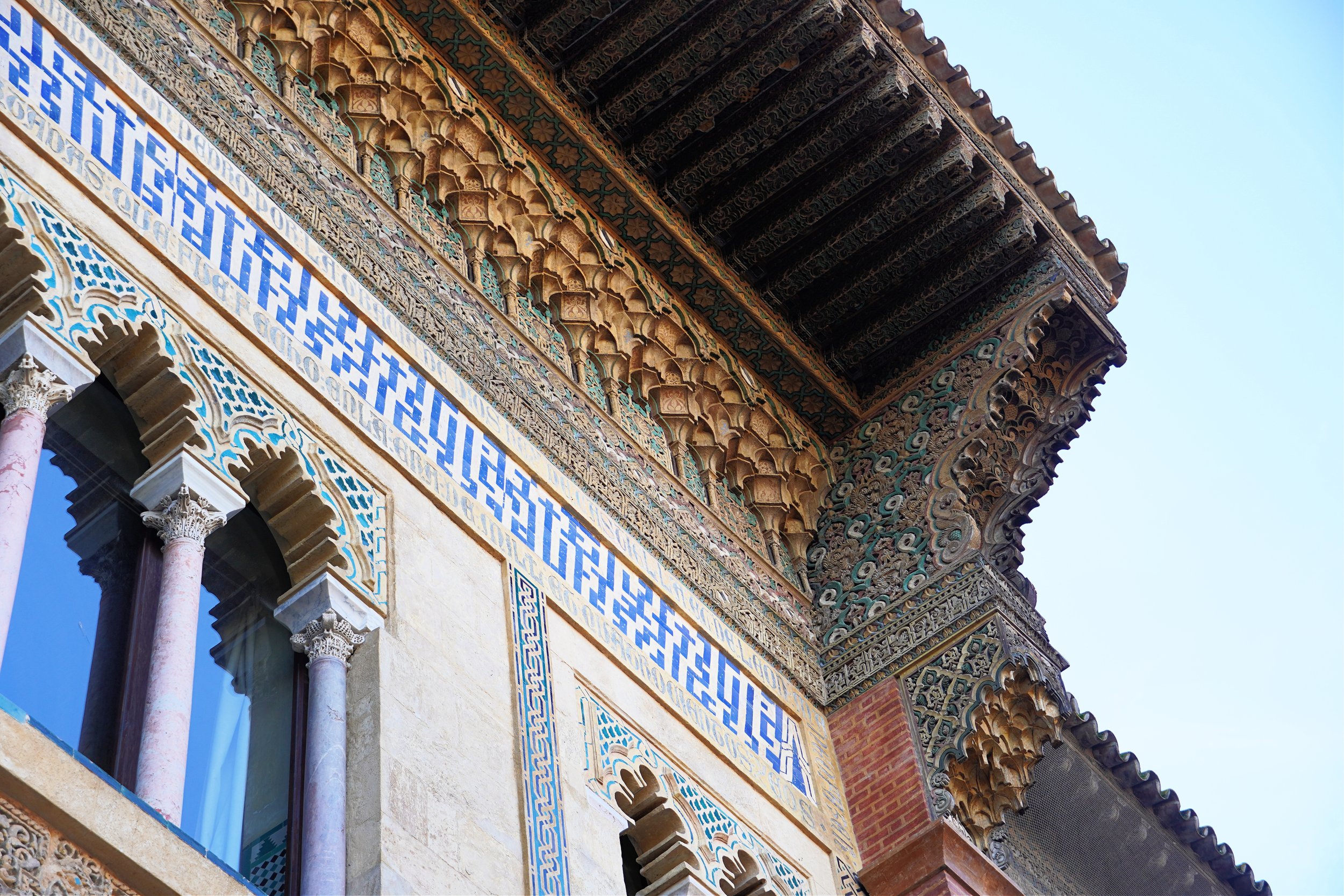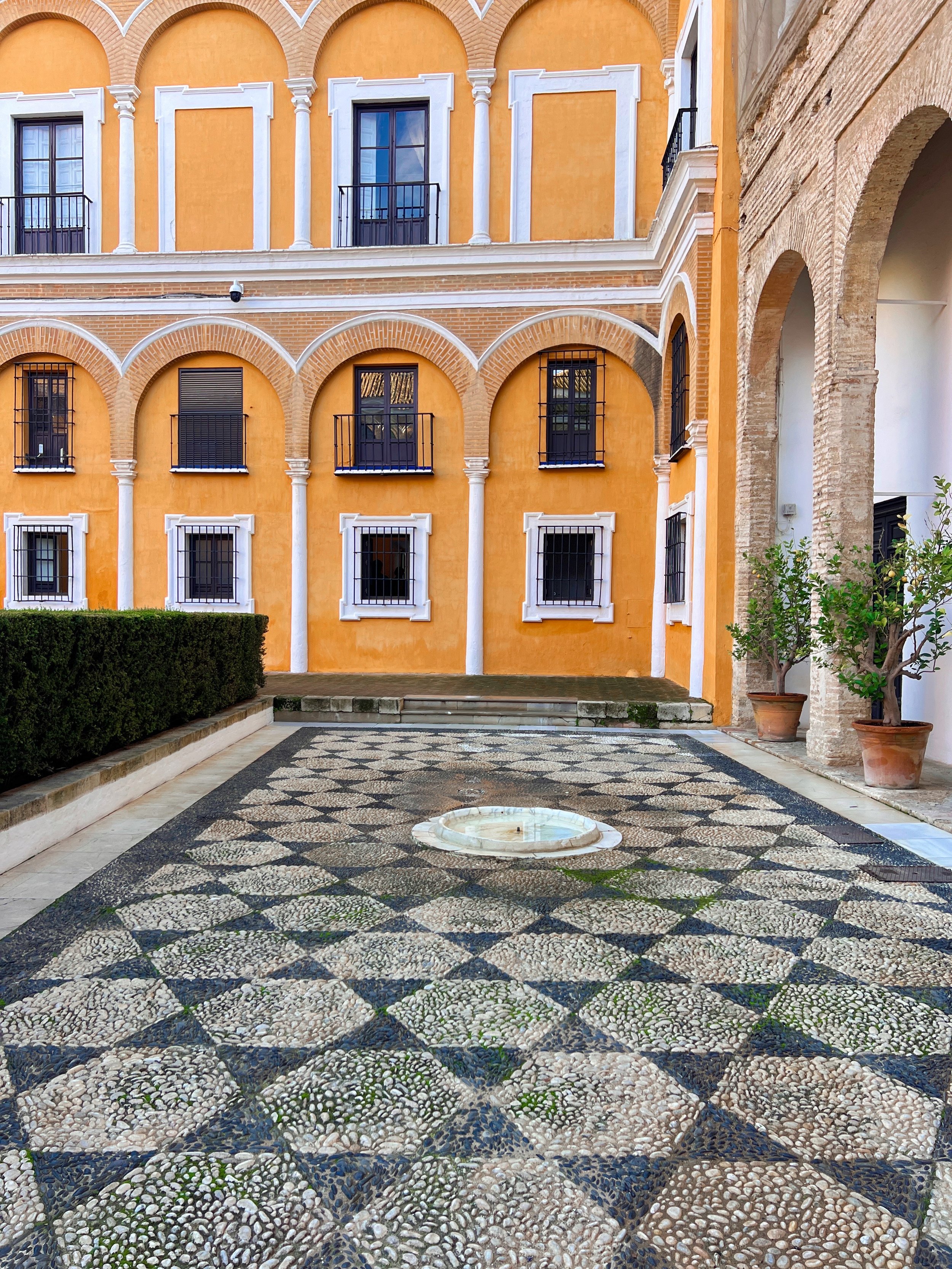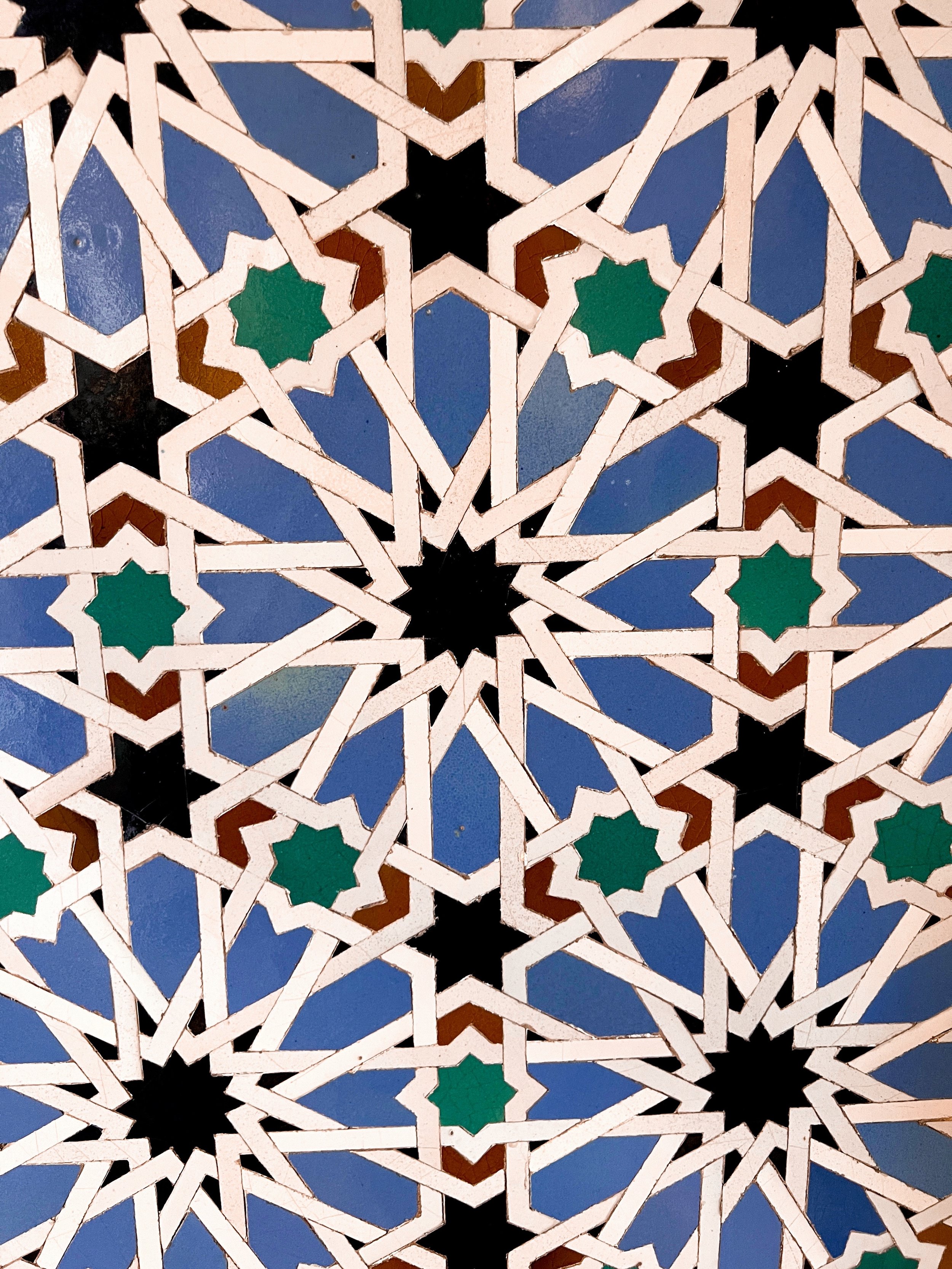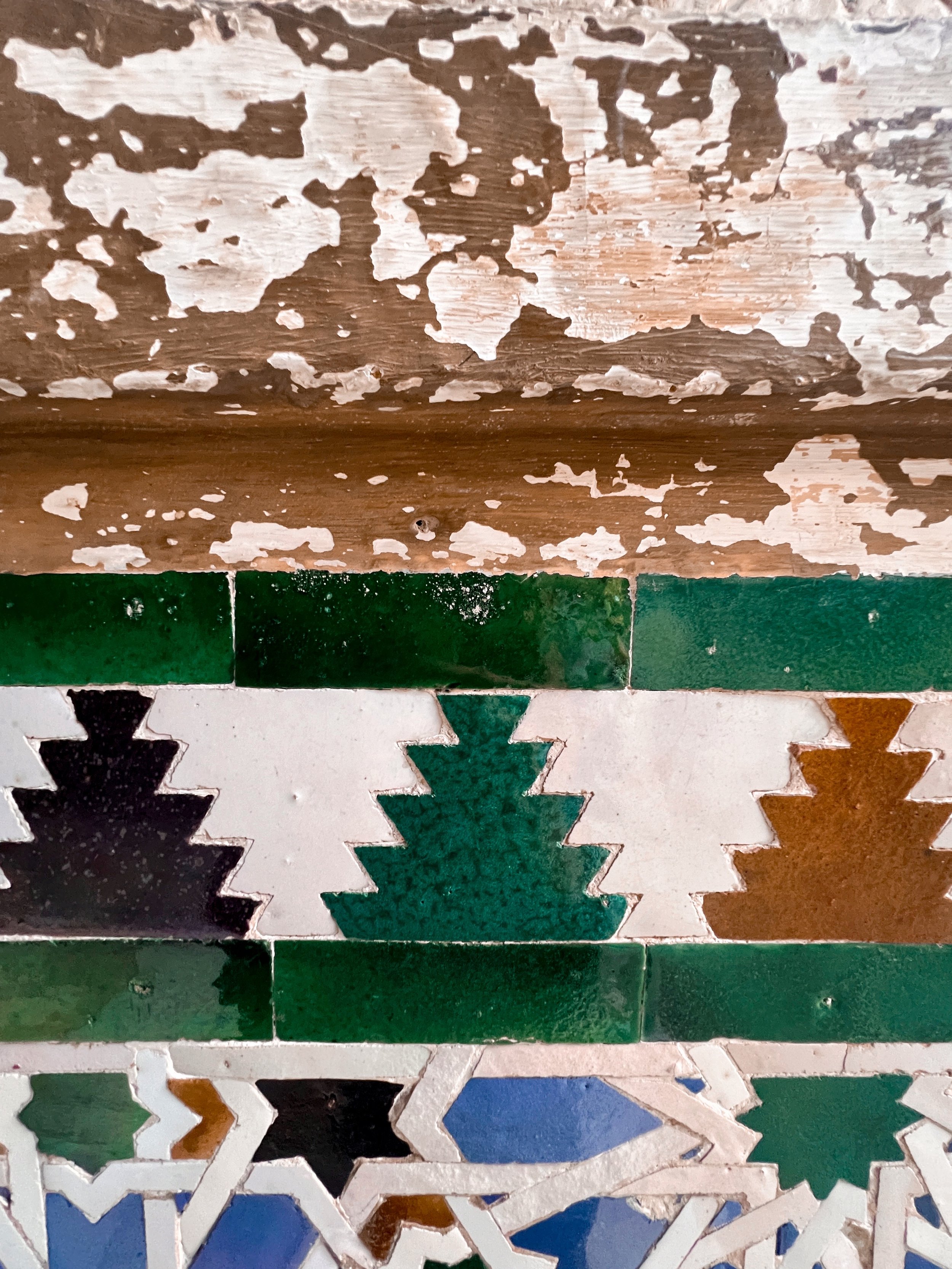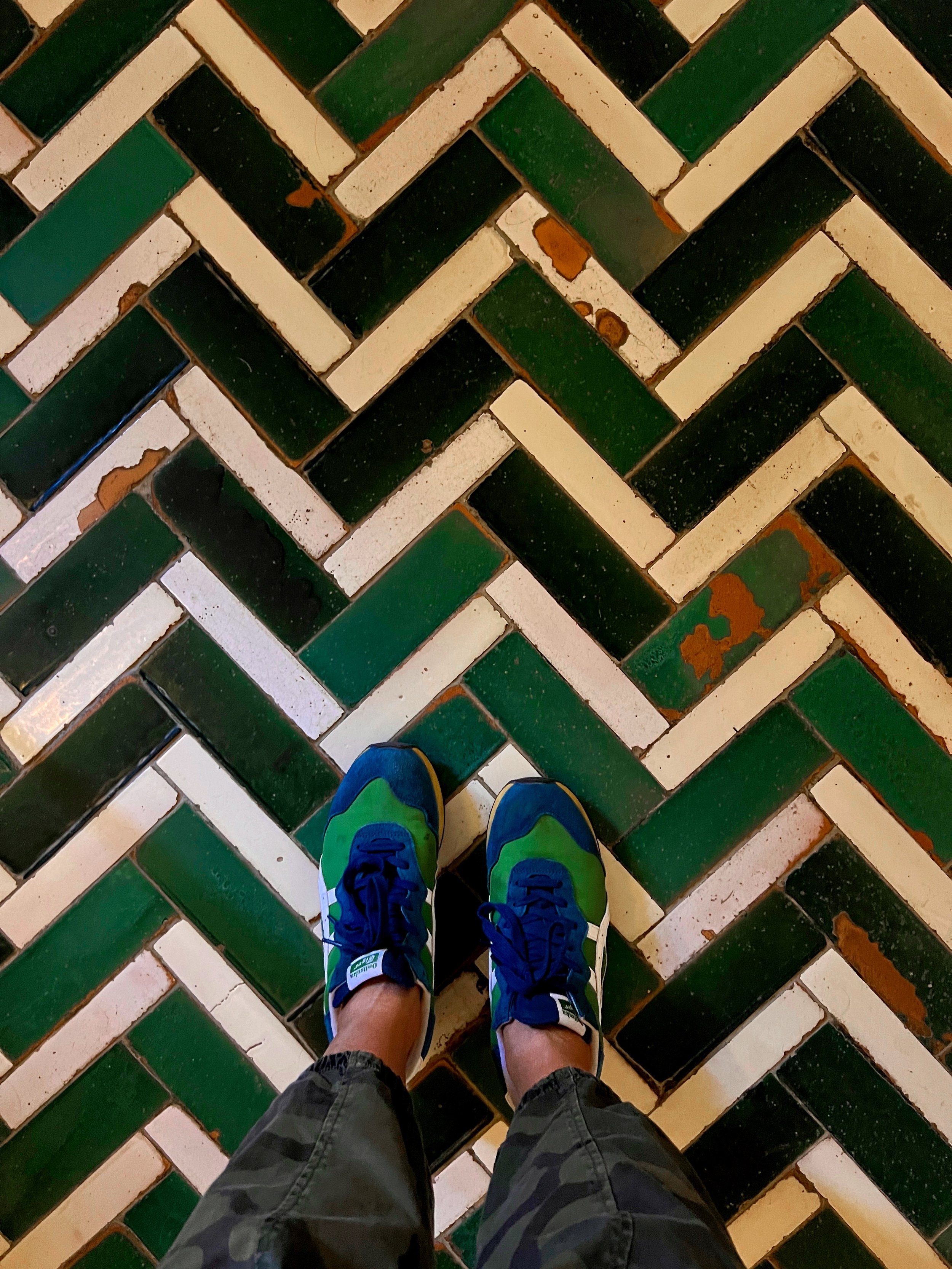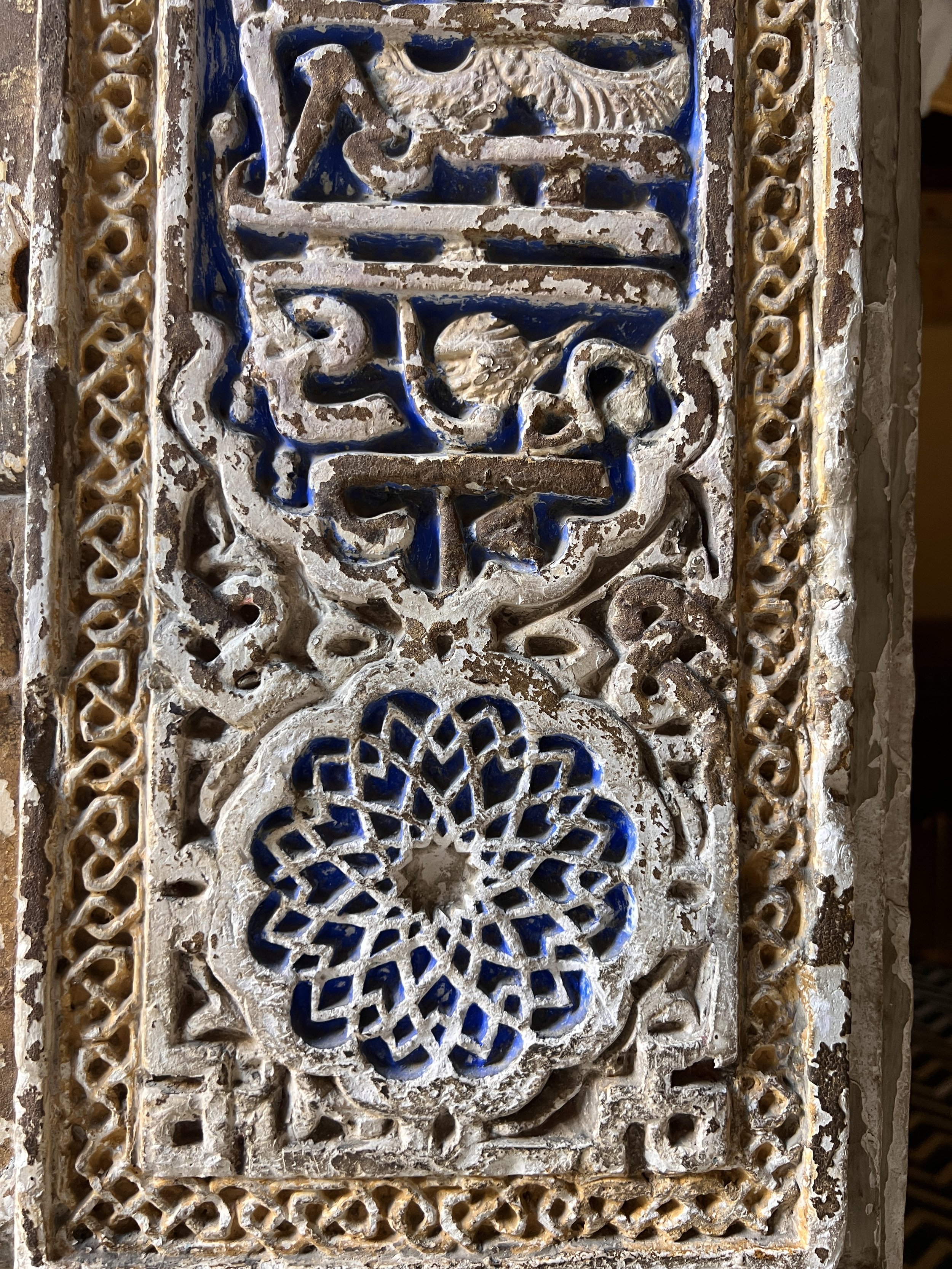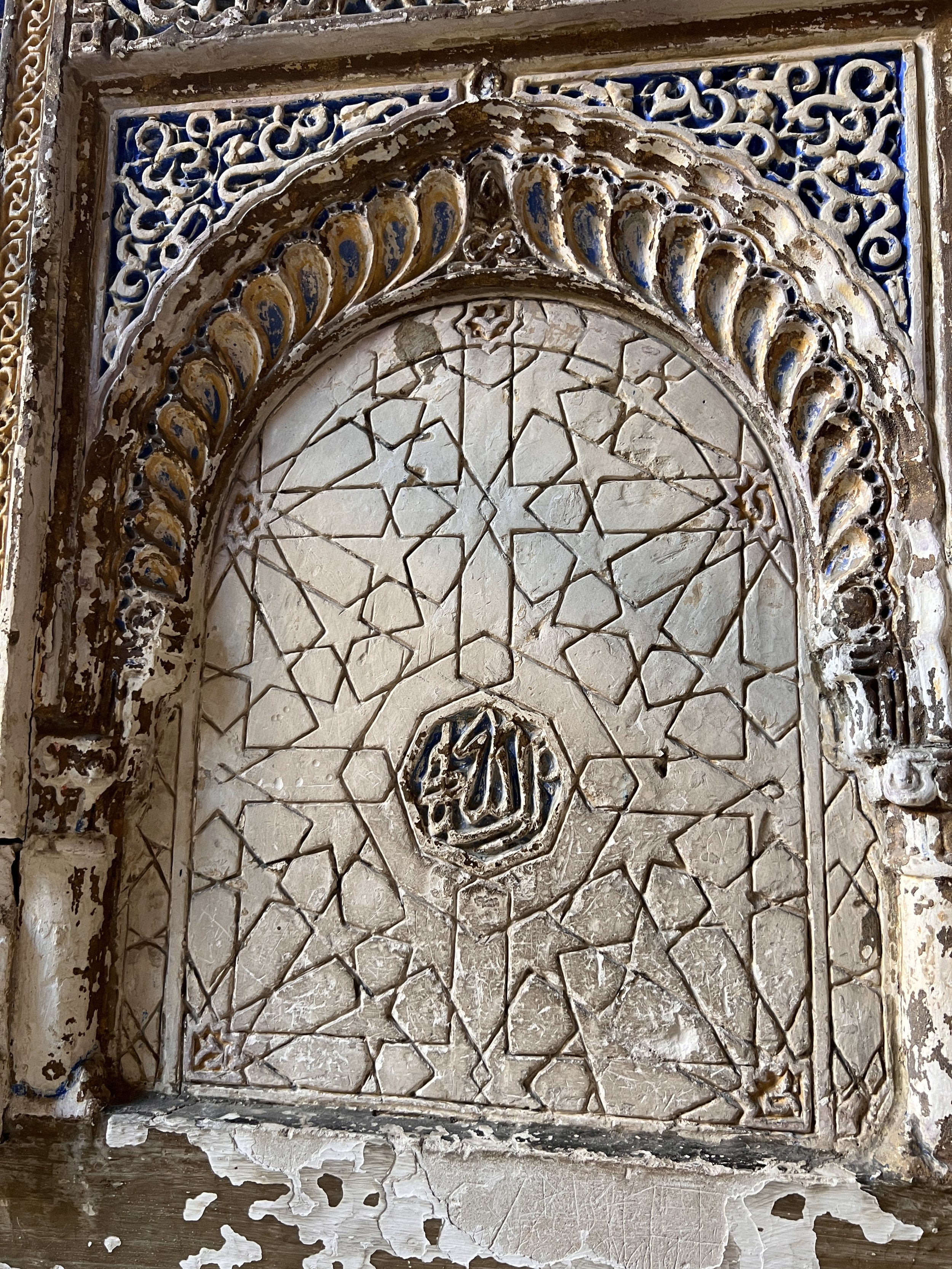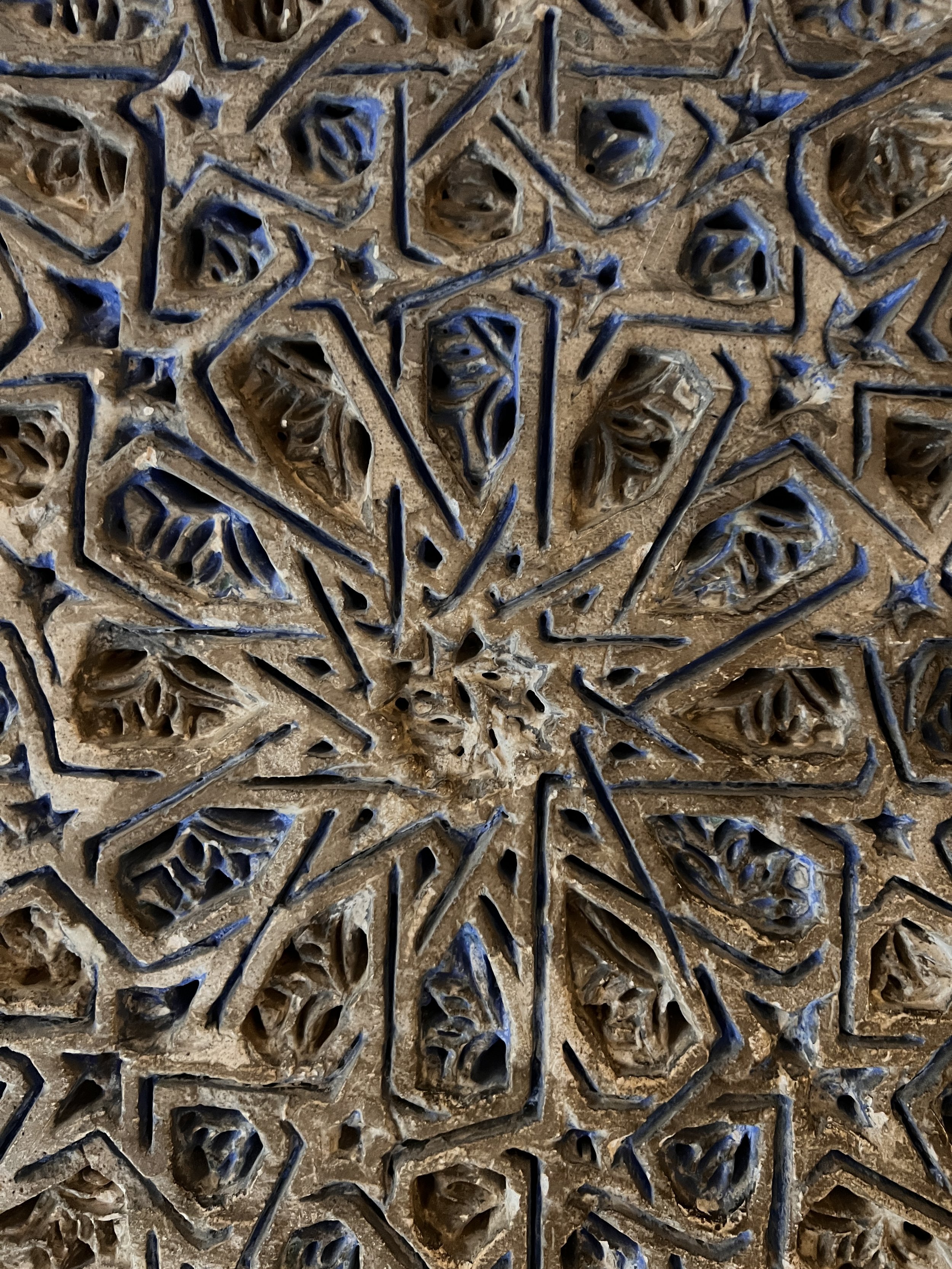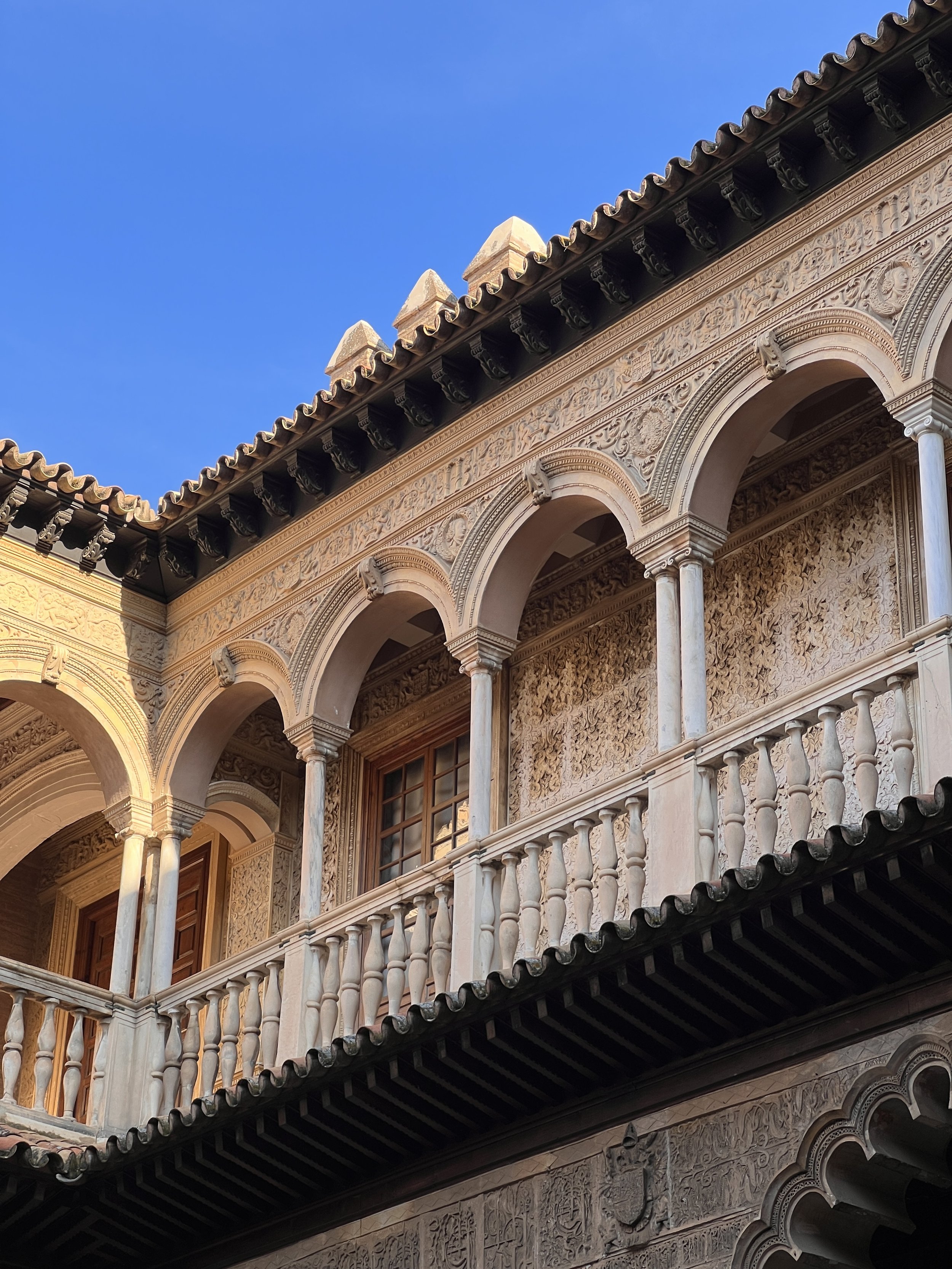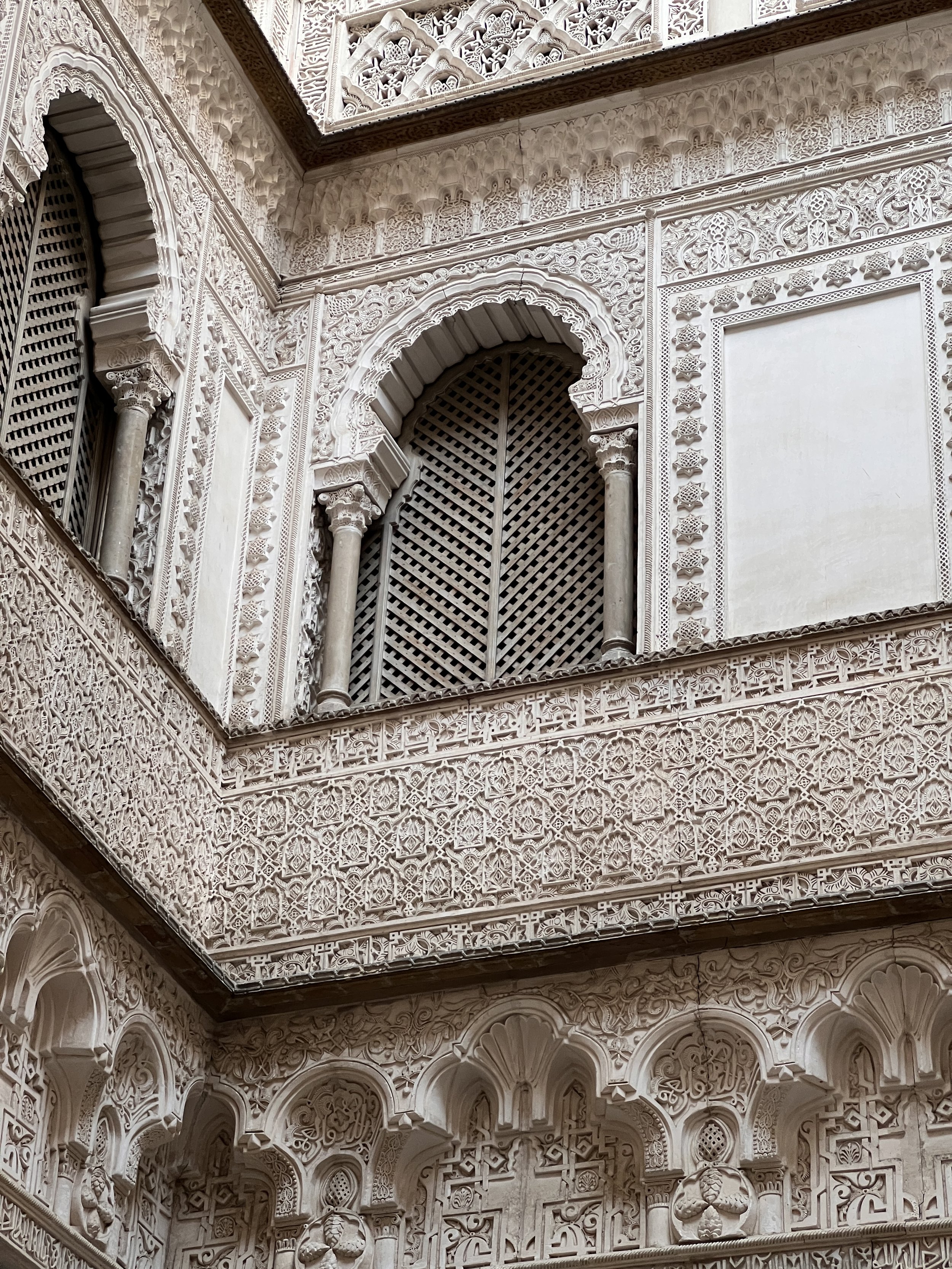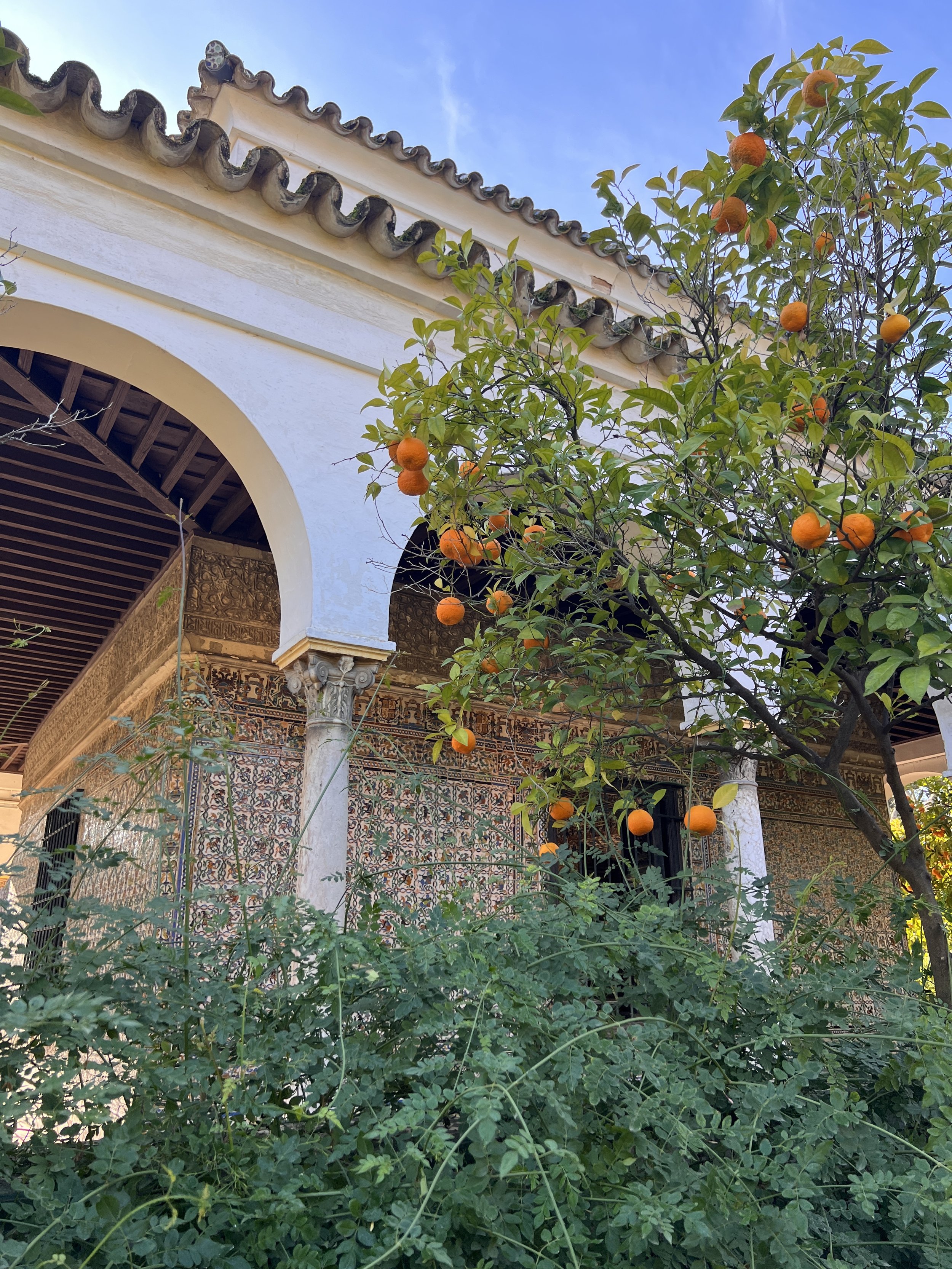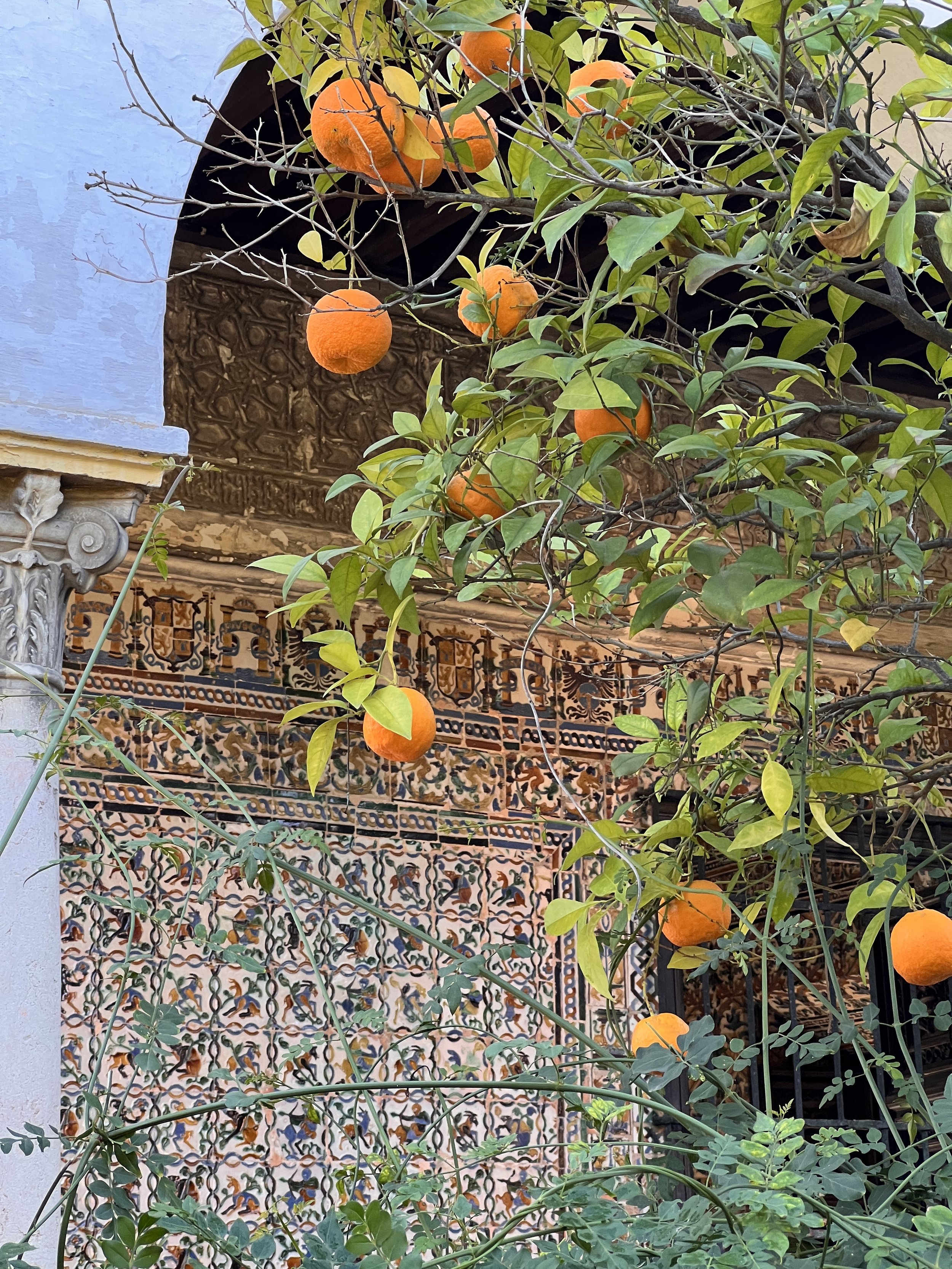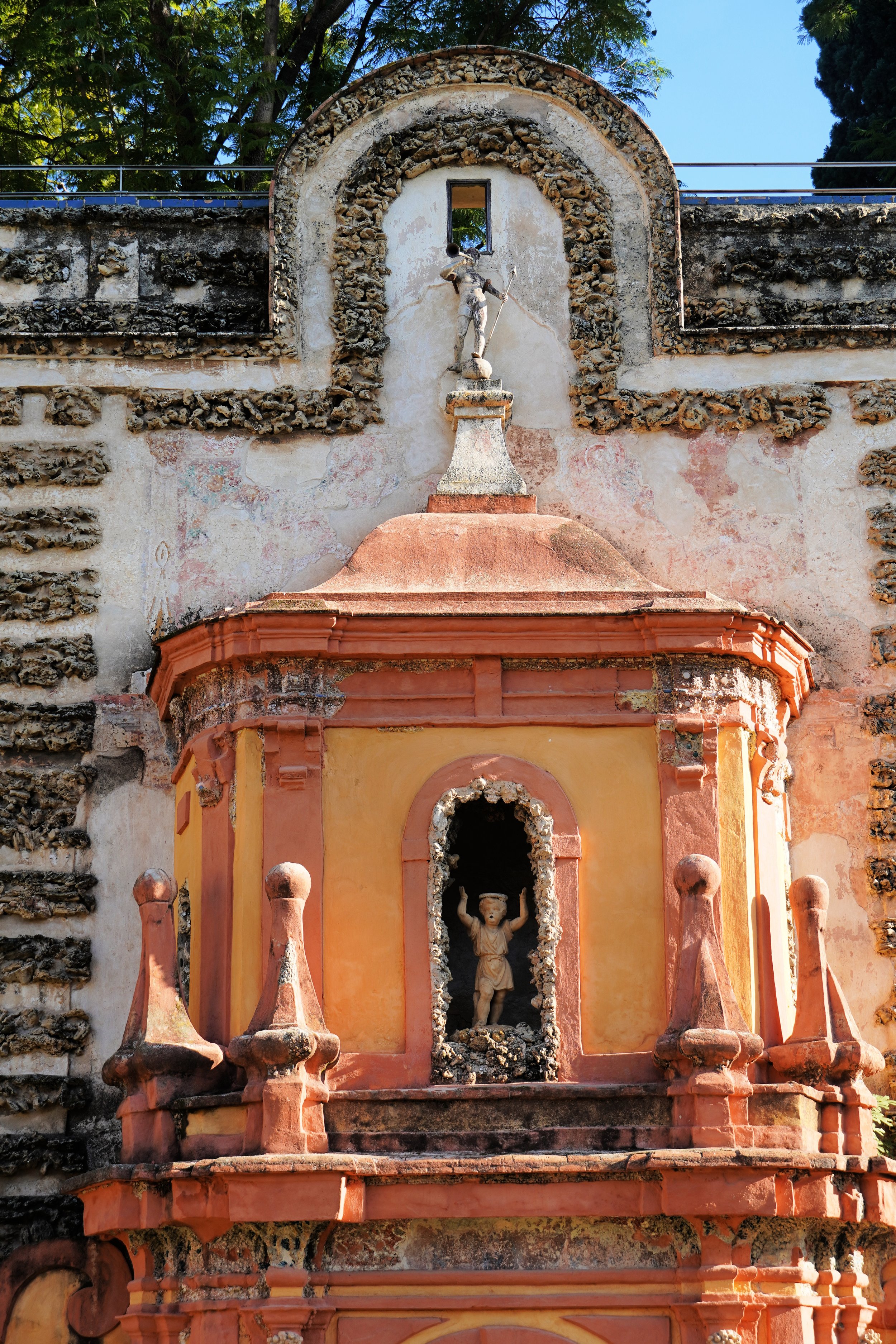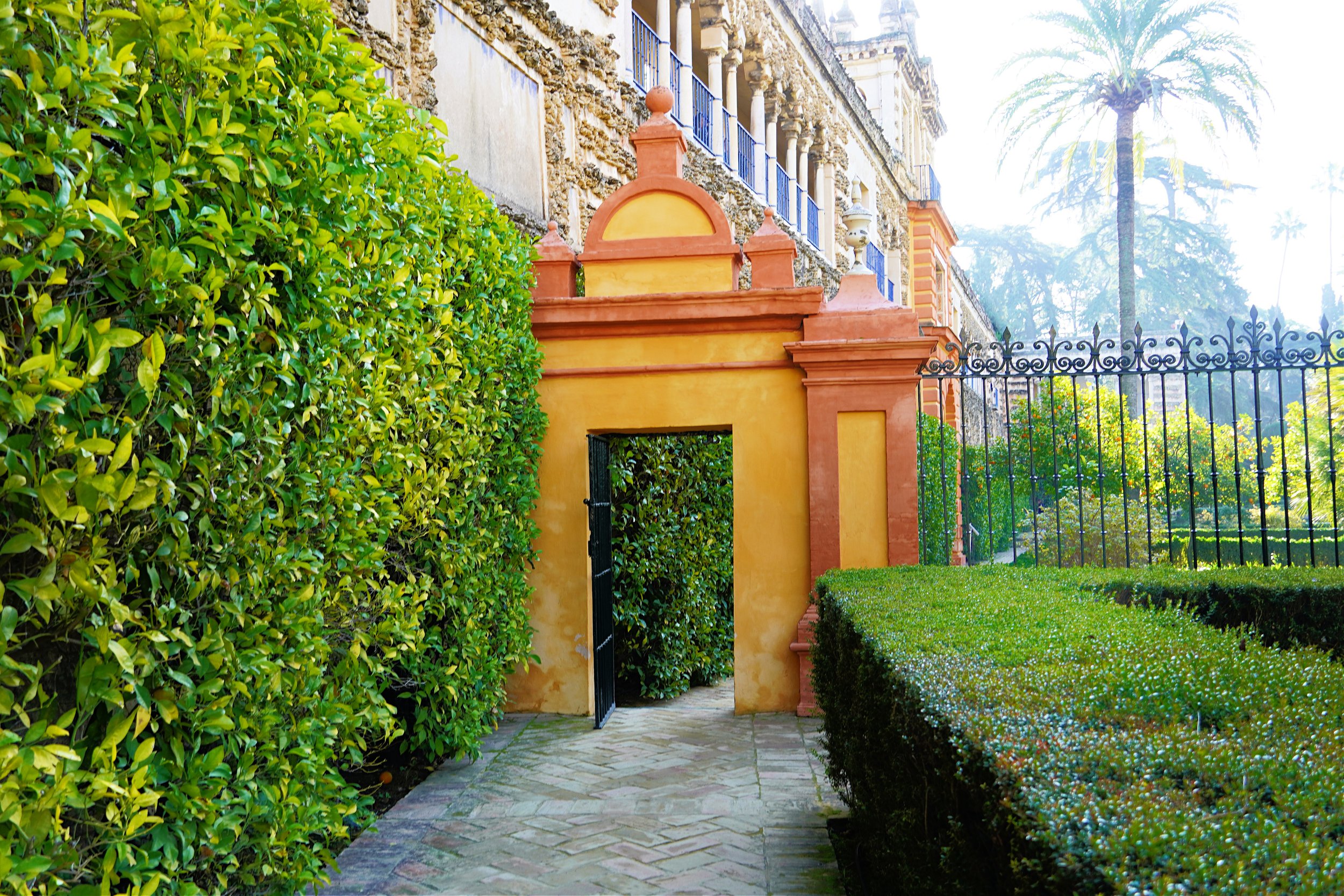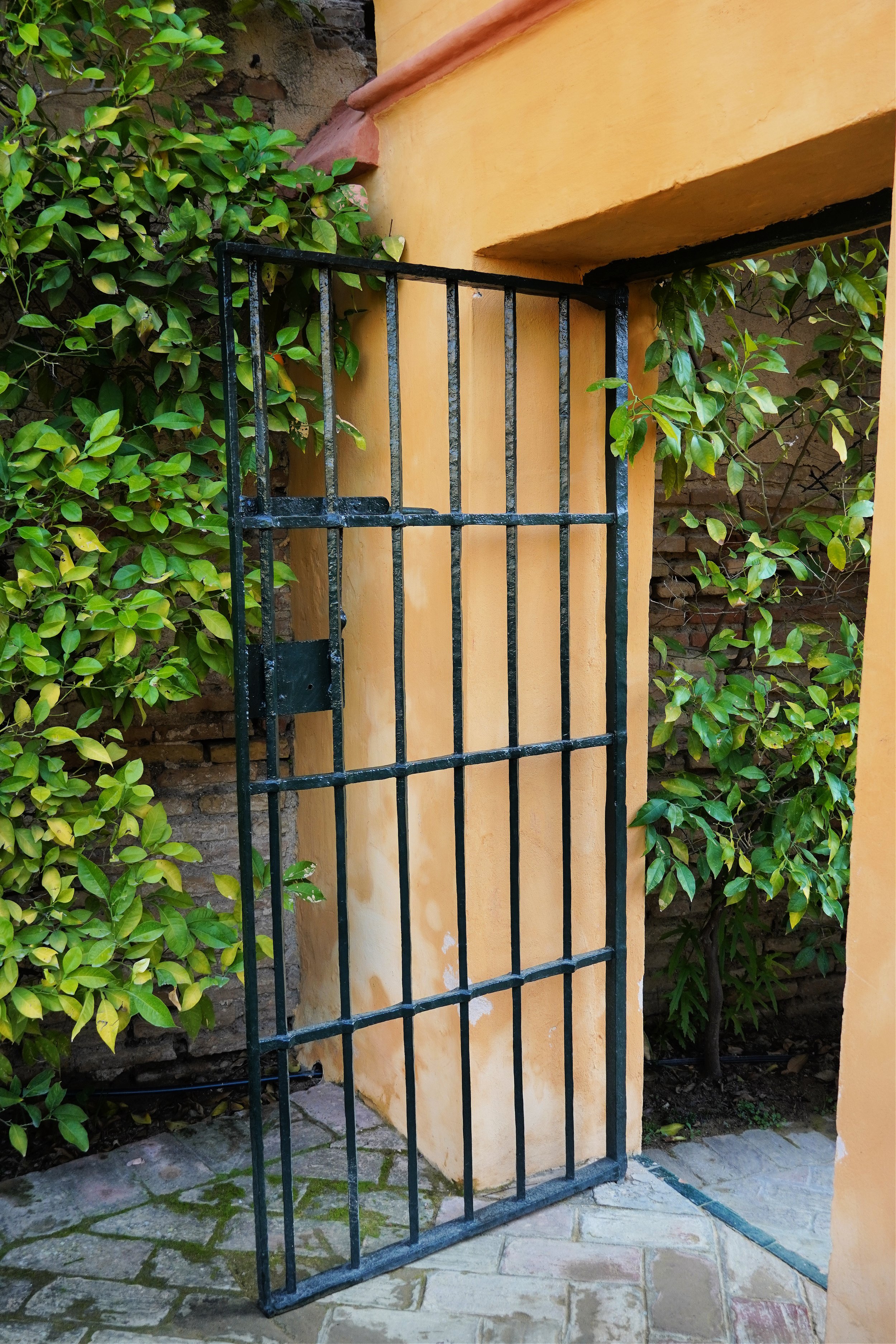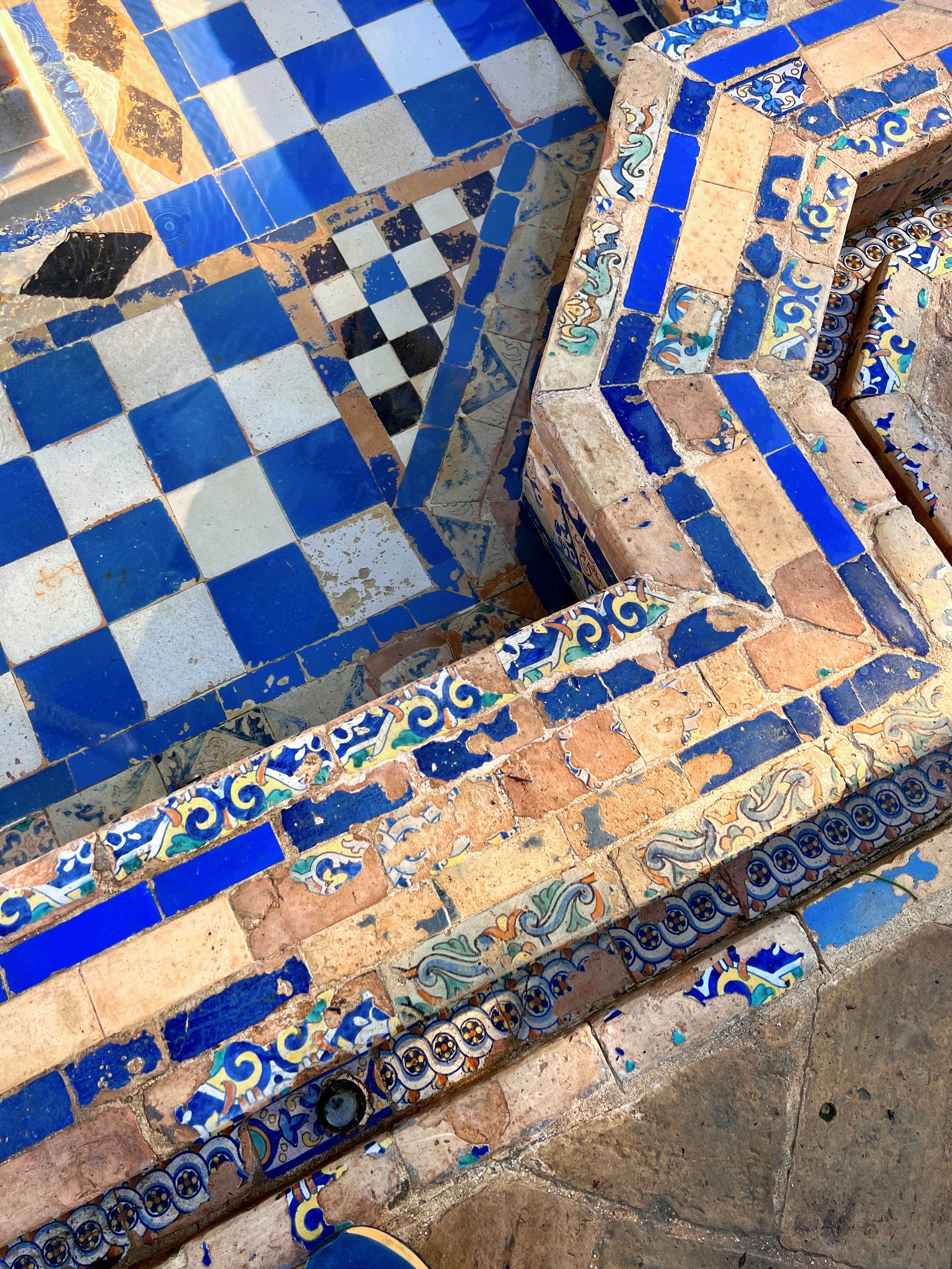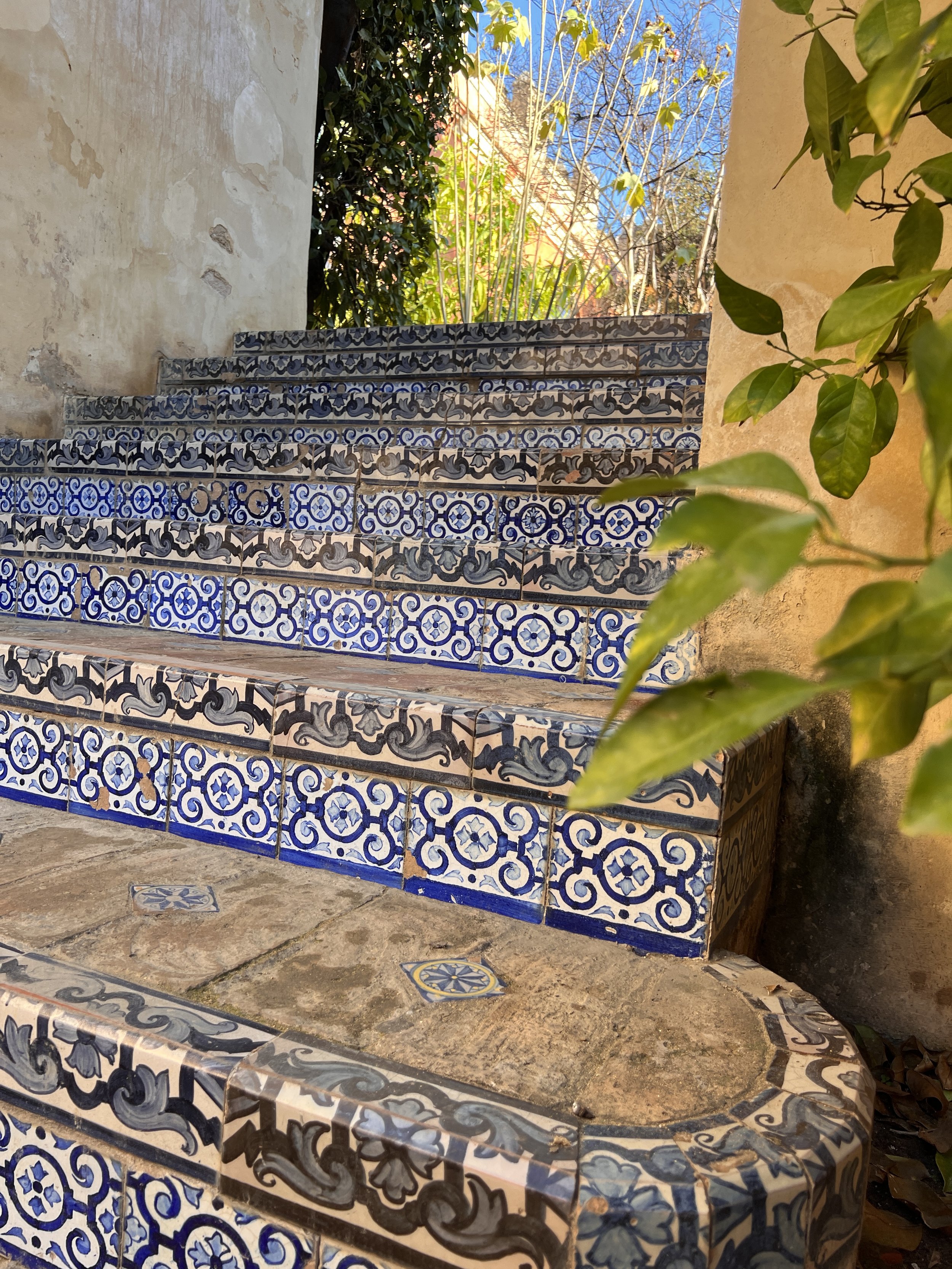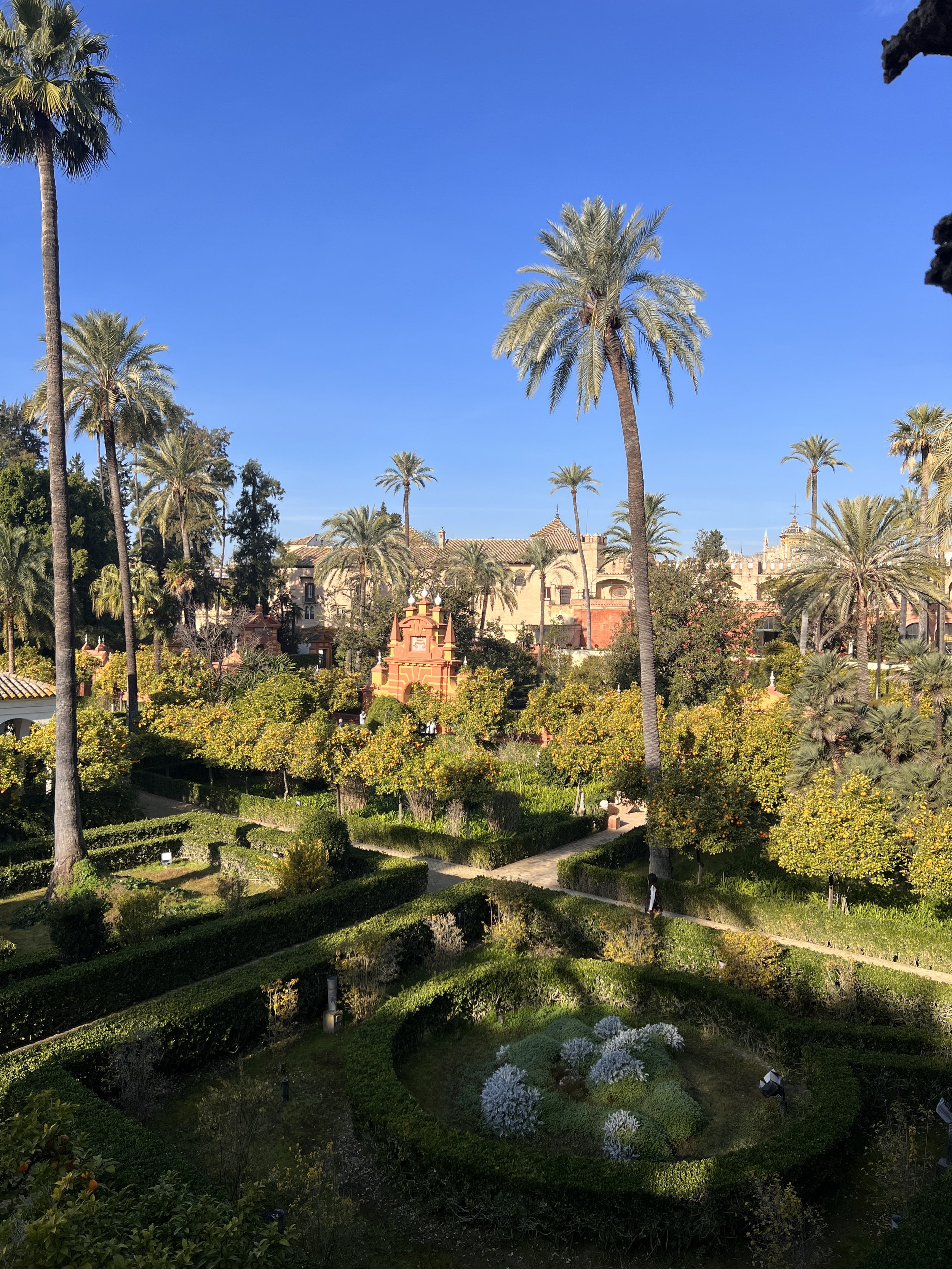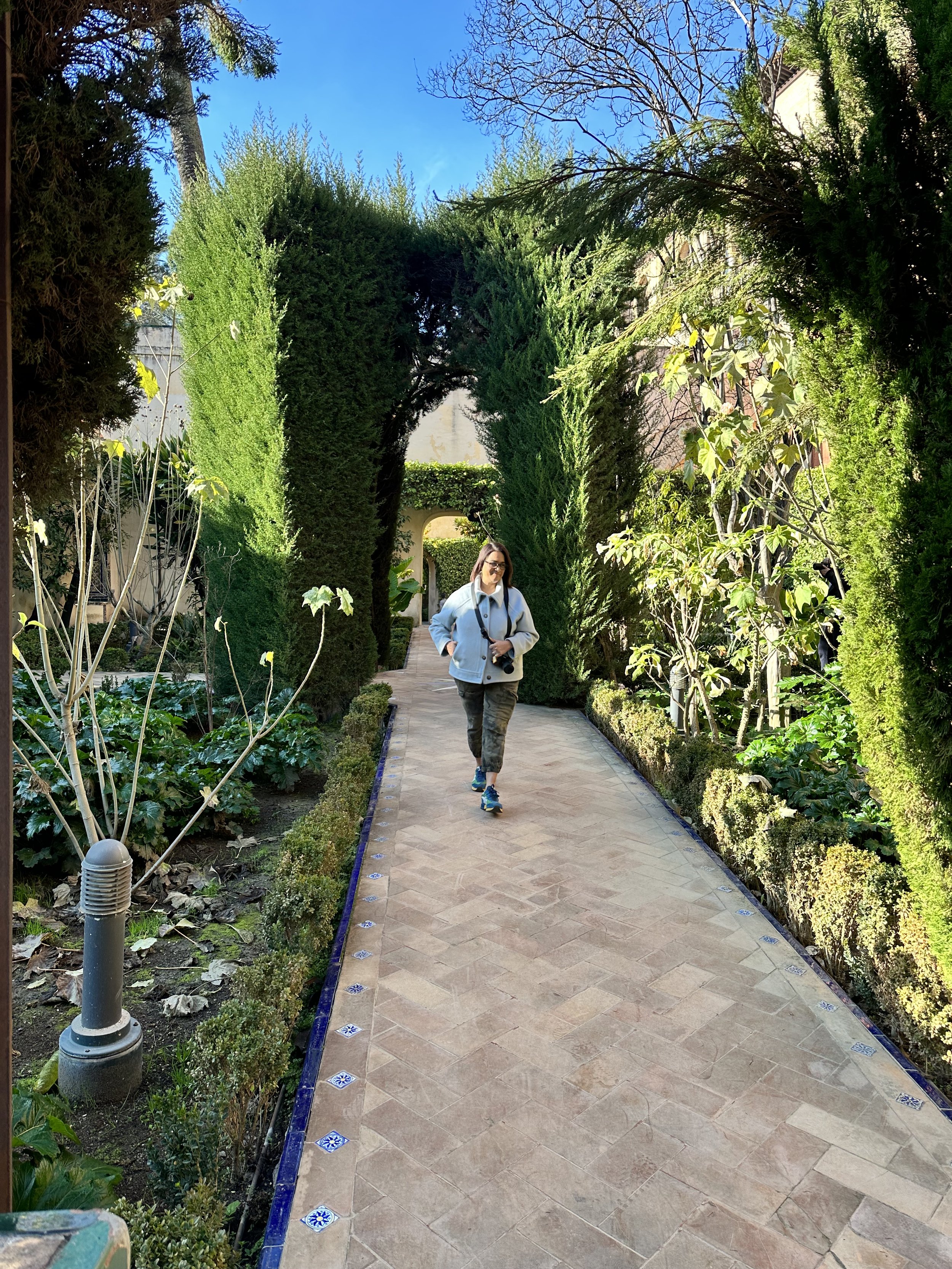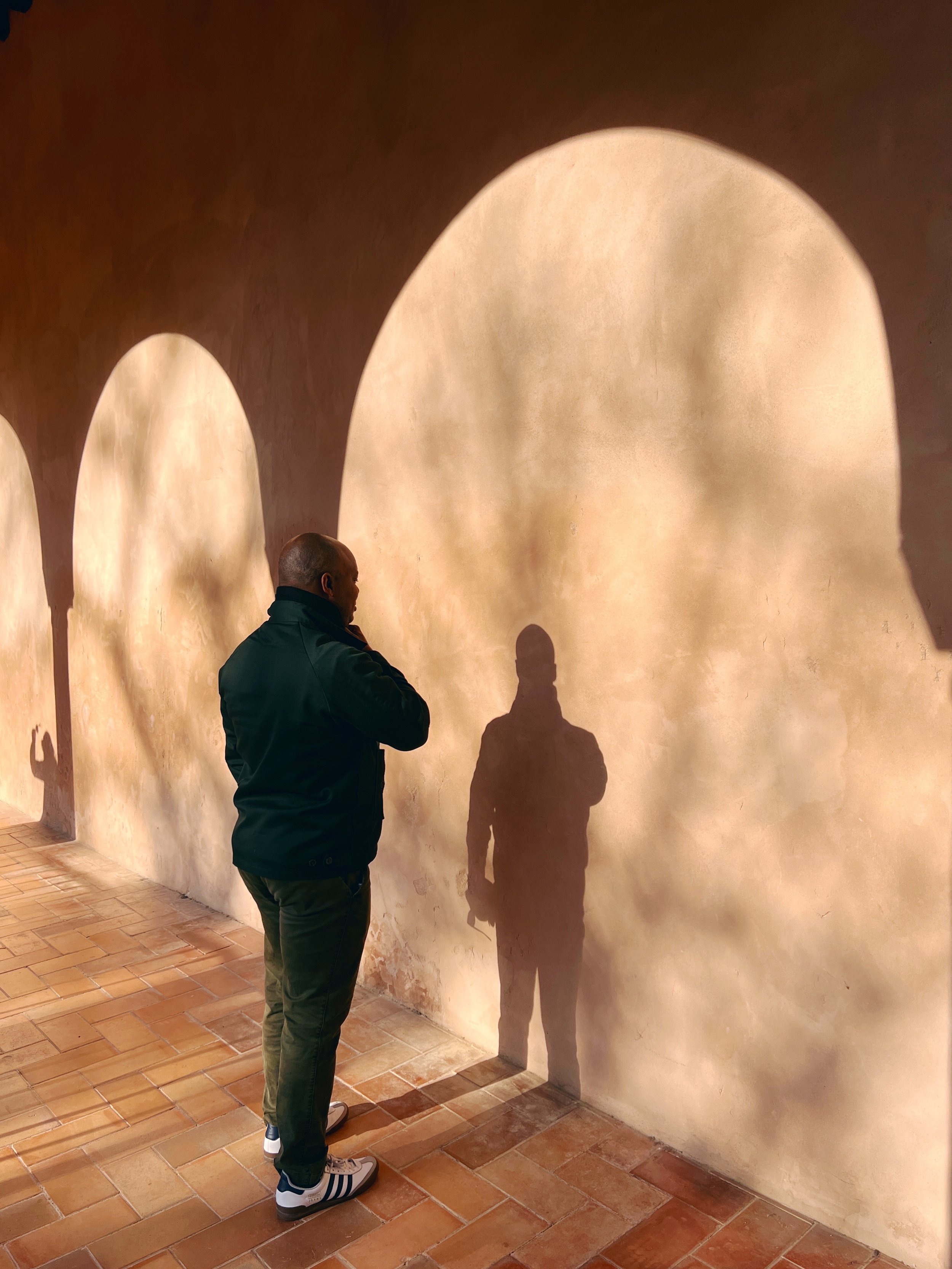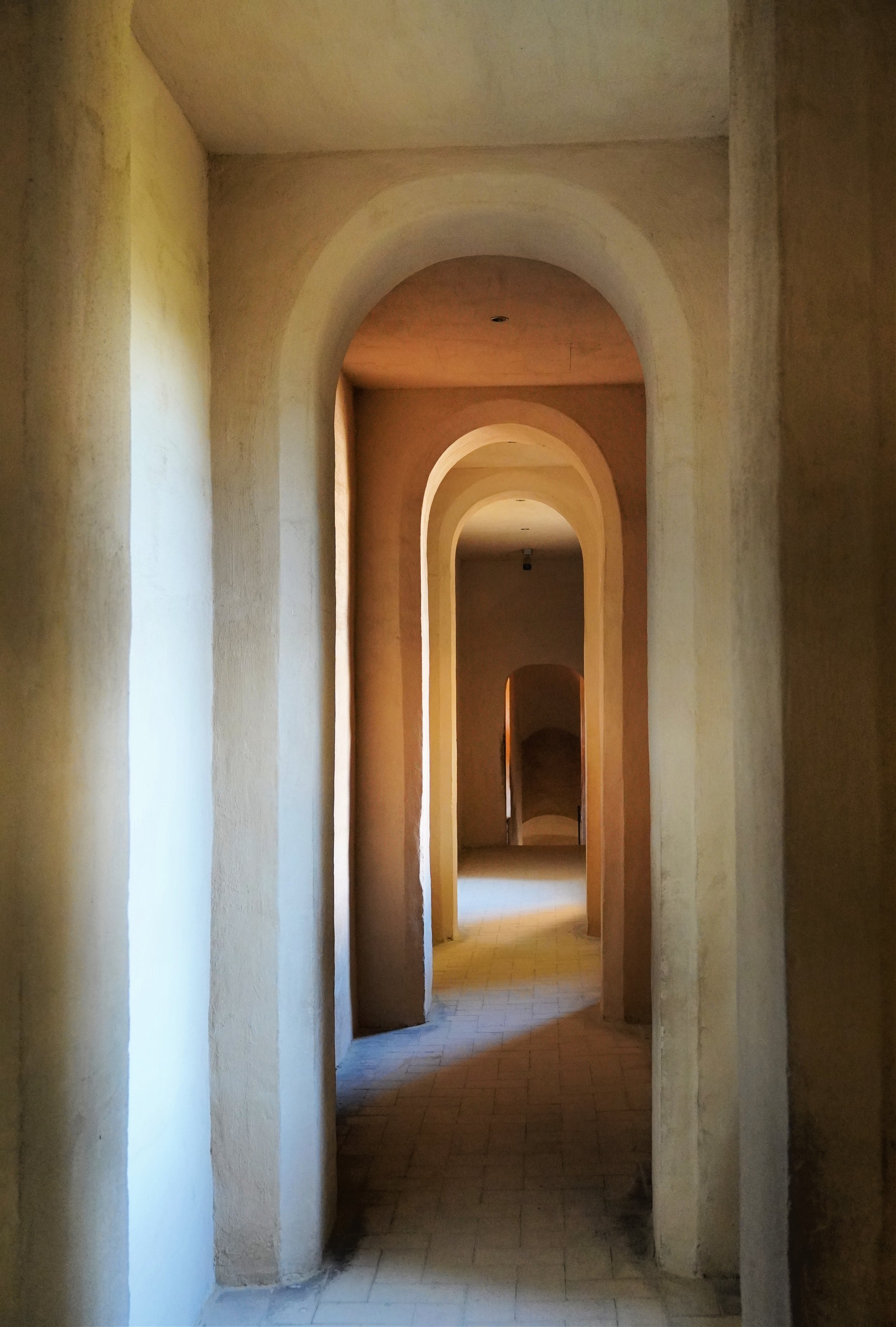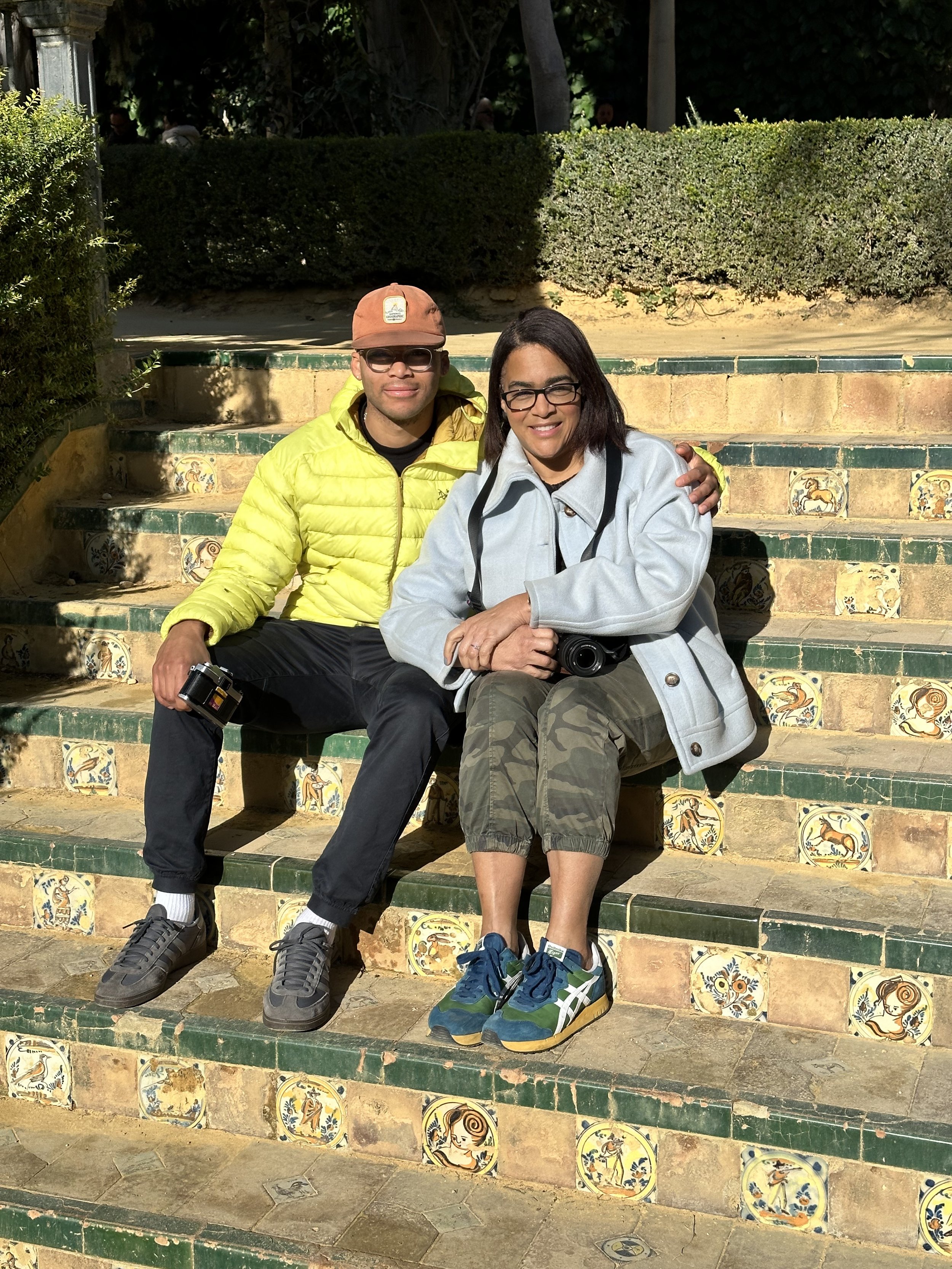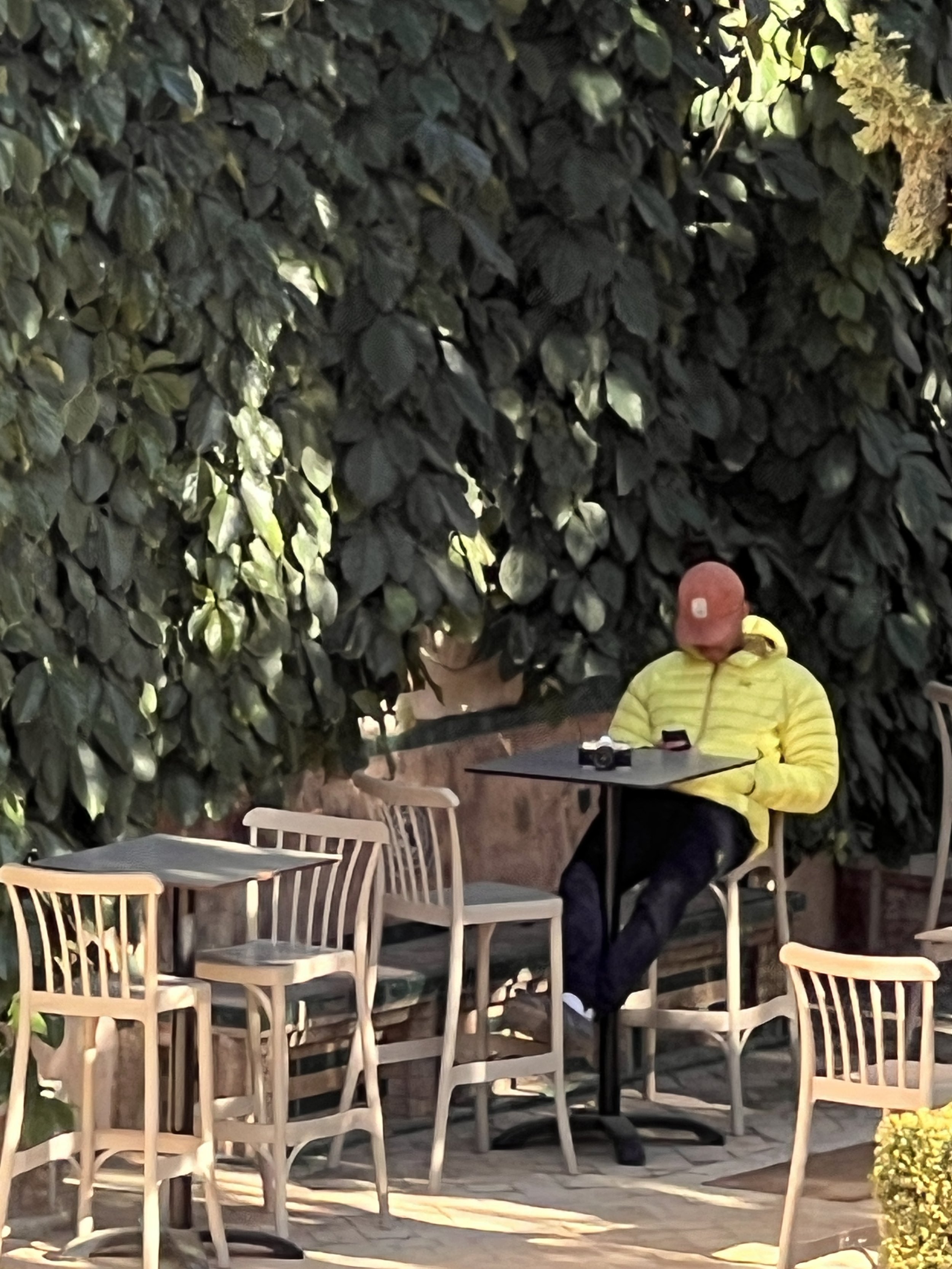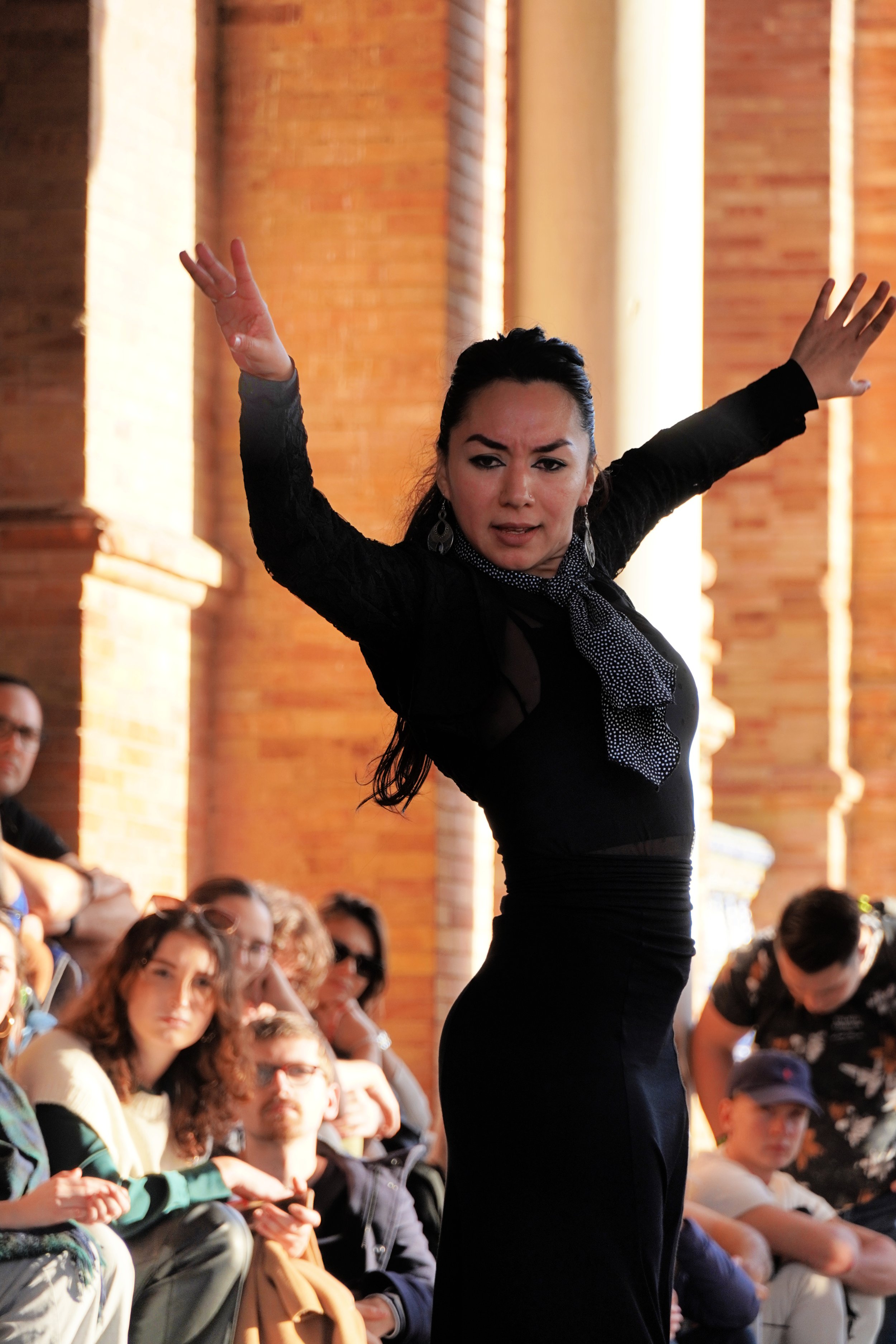Exploring the Beauty of Sevilla: A Comprehensive Guide to the Royal Alcázar

From its humble beginnings as a Moorish fort, the Alcázar has evolved through the centuries, witnessing different empires and kings. Each ruler, from the Islamic Moors to the Christian monarchs, has left an indelible mark on this architectural marvel, creating a mosaic of styles that range from Mudéjar to Gothic and Renaissance - it’s no wonder it is a UNESCO World Heritage Site.
The main entrance to the Alcazar - the Lion’s Gate - is located opposite the Cathedral
To avoid long wait times, I recommend you purchase tickets online in advance - this will allow you to fast track through the line. People start lining up as early as 9am, and in high travel season you can wait as long as 2 hours to enter if you have not purchased your ticket in advance. When you purchase your tickets you will choose a day and time. I suggest you choose an early morning time slot (on a weekday is even better) —- you’ll avoid the crowds. Allow at least 2 hours to spend at the Alcázar. There’s a lot to see!
Walking through the gates of Patio del Crucero.
The Alcazar is actually a collection of multiple palaces and gardens - my visit began with a walk through Patio de Leon that opens onto the Palacio del Rey Don Pedro (also known as the Mudejar Palace)
Walls of Palacio del Rey Don Pedro with intricate tiles and carving.
When you visit, you’ll walk through the rooms of the palace. I just love all of the tiles throughout this beautiful city and those throughout the Alcazar do not disappoint
Beautifully tiled rooms open onto the Patio de las Doncellas (Maidens Courtyard). This courtyard steals the show with its intricately carved arches and tranquil pool running down its center. It’s really peaceful. I took my time admiring the details the marriage of the arches and tiles. Fun fact: While this courtyard is named Maidens Courtyard, there is a debate that it is actually named this because of the type of flower planted in the courtyard, not actual maidens. I don’t know which is true but, there is no argument that it is a breathtaking space.
The Alcazar Gardens are quite expansive - we spent 2 hours visiting Alcazar and only saw half the gardens. I was quite surprised, the Alcazar seemed to be pretty busy while we were there, yet I still felt it was very peaceful. I could have spent more time in the gardens — it was odd knowing that outside the palace walls was a busy, bustling city yet, while I was in the garden all I felt was the peaceful serenity.
There are orange trees throughout the garden and the peaceful sound of fountains gently flowing.
We spent some time admiring the Fuente de la Fama (the Fountain of Fame). Fun Fact: This is an organ fountain from the 17th century, the only one of its kind in Spain and one of only three in Europe. Water pressure provides air to the statue’s trumpet, making it sound. I read that the organ plays each hour but, I never heard….. there’s a small bench conveniently in front of it for those who want to wait and hear it play.
For photographers, the palace and garden grounds are amazing. I was so happy I purchased the tickets for the 9:30am time slot - the lighting was incredible.
By the reflecting pool there is a quaint area that offers a bit of shade and space for rest and reflection. You’ll also find a cafe close by although I suggest you wait until you leave —- there are many, many dining options surrounding the Alcazar as you exit.
Final Tips:
- Buy your tickets in advance… Some tickets offer combined entry to other historical sites in Seville.
- The Alcazar is open daily from 9:30am - 5pm
- Visit early morning or late afternoon to avoid crowds and enjoy softer light for photography.
- Consider a guided tour to fully appreciate the historical context and hidden gems of the Alcazar.
- Wear Comfortable Shoes: Be prepared for a lot of walking on uneven surfaces.
- Check the Alcazar's calendar for special events, like summer concerts in the gardens.
- The area around the Alcazar is dotted with charming tapas bars offering authentic Andalusian cuisine.
I walked down the pathway past this rustic terracotta wall. I love the way the morning light kissed it — and because it was early, I had a moment to admire it by myself. This print is now available in our shop!
The Alcazar of Sevilla is more than just a palace; it's a cultural treasure that boasts the artistry and spirit of Spain. I hope you’ll experience the timeless beauty of the Alcazar and let it be the highlight of your Sevilla adventure.



